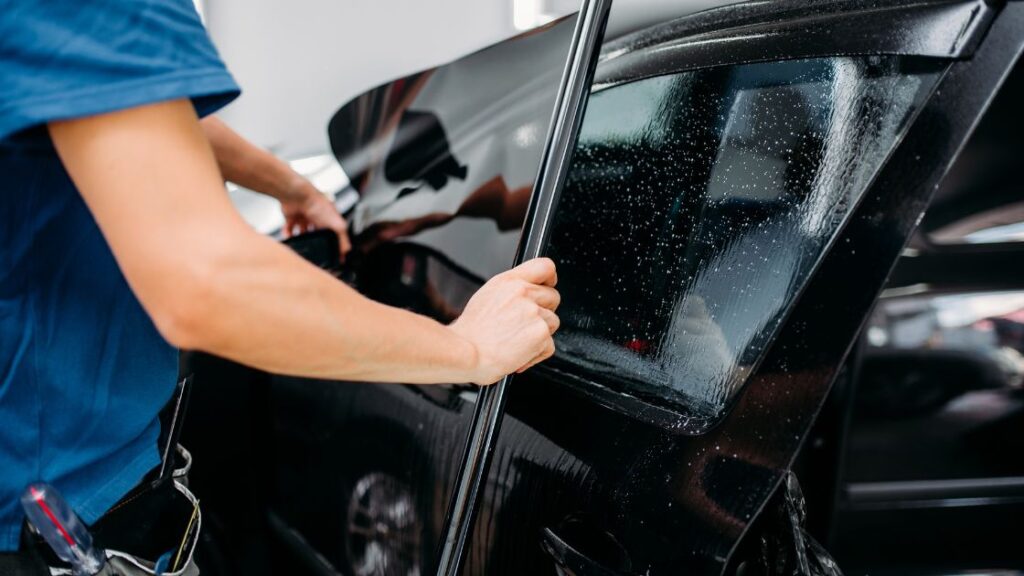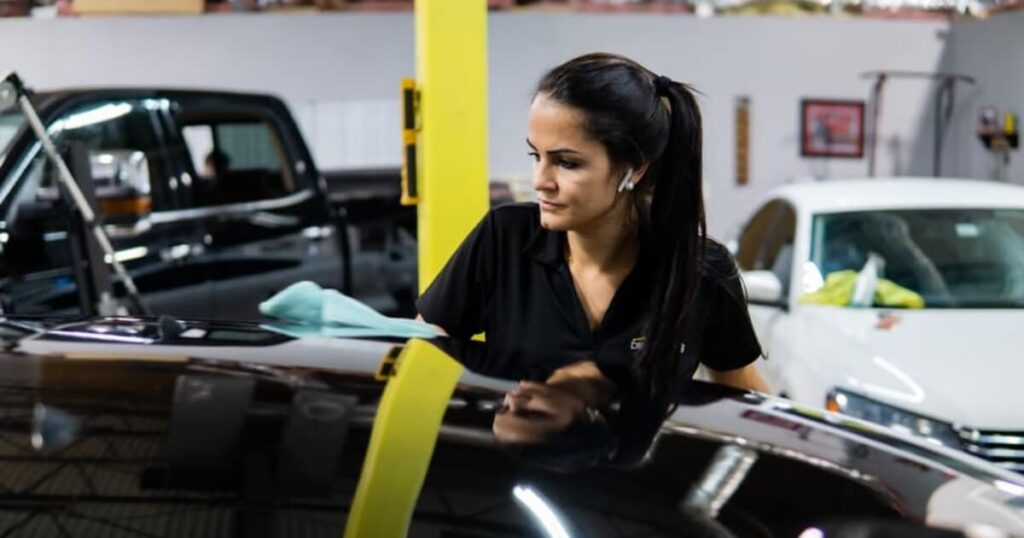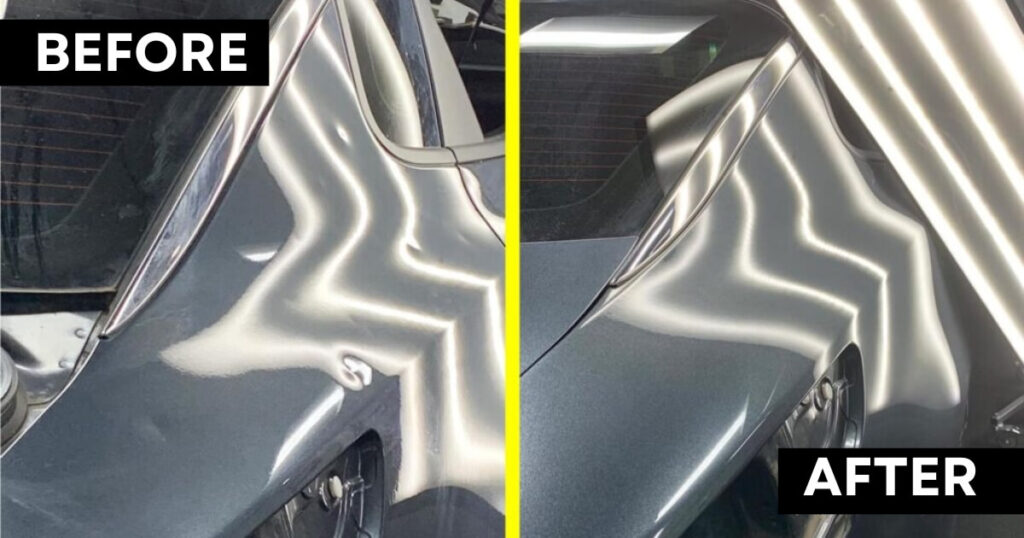If you’re a car owner, you understand the significance of maintaining and enhancing your vehicle. One aspect that can make a significant difference in both aesthetics and comfort is auto window tinting. As we journey through 2023, the world of the best auto window tint has evolved to offer a range of choices that blend style, protection, and energy efficiency. Whether you’re looking to turn heads or ensure a comfortable driving experience, this guide will navigate you through the advantages, drawbacks, different types, and legal considerations of car tint. Additionally, you’ll find valuable insights into installation, upkeep, and personalization. So, fasten your seatbelt as we delve into the realm of car tint and the universe of automotive window tinting.
Auto window tinting is more than just an aesthetic enhancement; it’s a practical decision with several benefits. It involves applying a thin film to your vehicle’s windows, serving various purposes like reducing glare, protecting against harmful UV rays, and improving insulation. Moreover, adhering to local laws regarding tint darkness is crucial.
Advantages of Auto Window Tint
UV Rays Protection
Have you ever considered the hidden threats of prolonged exposure to ultraviolet (UV) radiation? The sun’s powerful rays can wreak havoc on your car’s interior, causing fading and cracks on the dashboard. Moreover, your skin isn’t immune to its harmful effects. Enter window tint – a guardian against these invisible adversaries.
Imagine cruising the roads with a sense of security, knowing your car’s interior and skin are shielded from the sun’s silent assault. It is the empowering advantage that window tinting bestows.
Glare Reduction
Within the confines of your car, glare can emerge as an unwelcome companion – whether from the sun’s rays, the piercing headlights of fellow vehicles, or reflective surfaces. The magic of car tinting lies in its ability to diminish this intrusive glare, enhancing your visibility and relieving the strain on your eyes.
Imagine taking the wheel during a radiant sunset without contending with squints or straining to discern the road ahead. This is the liberating benefit that reduced glare, bestowed by window tint, brings to your driving experience.
Enhanced Privacy
Privacy within your vehicle transcends mere solitude; it’s a realm of security, theft deterrence, personal belonging protection, minimized distractions, and an atmosphere conducive to relaxation or productivity. When you tint your car’s windows, you’re weaving an invisible shield enveloping the interior in privacy.
Consider this: navigating bustling roads with the reassurance that your fellow travellers and passersby can’t peer into your personal space. It’s a sanctuary of peace, a cocoon of personal freedom that car tinting graciously imparts.
Protection against Glass Shattering
The glass fracture within a car isn’t merely an inconvenience; it’s a peril that can obscure visibility, elevate injury risks in collisions, and pose a hazard from sharp glass fragments. This is where the role of car tint emerges as a silent yet significant safeguard. By potentially holding shattered glass together, tinting contributes to enhanced safety, reducing the potential for harm in the event of an accident.
Consider the peace of mind that accompanies every drive, knowing that your window tint functions as an unobtrusive sentinel, adding an extra layer of defence for you and your fellow passengers.
Disadvantages of Window Tinting
While the advantages of car window tinting are undeniable, it’s prudent to recognize potential drawbacks. These considerations include compromised visibility, cleaning challenges, and the risk of damaging window defrosting lines and seals.
Now, let’s delve into these challenges and explore strategies to tackle them head-on.
Visibility is Reduced
Tinted windows, while enhancing privacy and comfort, can sometimes reduce visibility, particularly in low-light situations or adverse weather conditions. To mitigate this, drivers should adapt their driving habits by moderating their speed and utilizing essential tools like windshield wipers, defrosters, and headlights as needed.
Additionally, adhering to state and provincial laws regarding tint darkness and reflectivity ensures a delicate equilibrium between personal privacy and road safety.
Window cleaning is difficult
Cleaning tinted windows requires a touch of finesse. Traditional cleaning agents containing ammonia can be detrimental, potentially causing discolouration and harm to the tint. Instead, use a mild cleaning solution or plain water when maintaining your tinted windows.
A soft microfiber cloth proves to be your ally in this endeavour. Remember to wipe in a single, consistent direction to fend off streaks and smudges. Your diligence in proper cleaning practices will preserve both the clarity of your windows and the integrity of your tint.
Damage to window defrosting lines
While car tinting is designed to enhance your driving experience, there’s a potential hurdle to navigate – the delicate window defrosting lines. Constructed with a thin metal, these lines can be susceptible to harm during the tinting process.
The solution lies in prioritizing quality – both in installation services and products. Opt for reputable installation services and reliable product safeguards against accidental damage to the defrosting lines. When selecting a dealer, ensure they possess the expertise to handle such nuances without compromising the functionality of your window defroster. This way, you can enjoy the benefits of tinting while preserving the essential features of your vehicle.
Types of Auto Window Tint
Now that the panorama of window tinting benefits and potential considerations are more apparent, it’s time to journey into the realm of car tint types. Here, we’ll delve into the trio of options: ceramic window tint, metallic window tint, and dyed window tint.
Each variant has distinct attributes and perks, allowing you to select the one that seamlessly aligns with your desires and requirements.
Ceramic Window Tint: Pinnacle of Performance
Enter ceramic window tint, a technological marvel designed with nano-ceramic ingenuity. This formidable contender proficiently blocks heat-producing infrared rays while warding off the harmful grasp of UV rays. An added boon is its compatibility with radio, cellular, and Bluetooth signals for those who value uninterrupted connectivity.
With ceramic window tint, your driving experience transforms into a calm haven. Unleash the full force of its heat-blocking prowess and relish comfort on every road you tread.
Metallic Window Tint: Guardian of Style and Protection
Metallic window tint provides superior UV ray protection and creates a sleek, “blacked out” appearance that adds privacy. This tint embraces a distinctive “blacked-out” facade, enhancing privacy with a touch of style. Its exceptional heat rejection and subtly reflective finish coalesce to infuse your vehicle with modern elegance.
Opt for Madico’s metallic window tint, and you’ll embrace performance and connectivity. Radiate style while remaining seamlessly connected, enjoying the best of both worlds.
Dyed Window Tint: A Reliable Classic
Dyed window tint emerges as a stalwart choice, offering reliable UV protection and lasting resilience. Like its counterparts, this tint respects your need for connectivity by refraining from obstructing radio, cellular, or Bluetooth signals.
Noteworthy for its subtle enhancement of factory glass performance, dyed window tint subtly uplifts your vehicle’s appearance without compromising visibility. It’s a classic choice that encapsulates both form and function.
As you embark on the quest to elevate your vehicle’s appeal and functionality, remember that your choice of car tint is a personalized reflection of your preferences. Whether you opt for ceramic, metallic, or dyed, you’re making a statement about your driving experience.
How to Choose the Best Auto Window Tint
Amidst a constellation of car tint types and their advantages, finding the ideal fit for your vehicle might seem like a complex puzzle. Fear not, for this segment is your guiding light. Here, we’ll delve into the intricate tapestry of factors that inform your choice of tint film, unravel price disparities between film types, and weigh the merits of professional installers versus DIY ventures.
Factors to consider when choosing the best auto window tint
Many factors beckon your attention as you stand at the crossroads of tint film selection. The paramount considerations include heat blockage prowess, quality, darkness and reflectivity, type, UV protection, legal compliance, and intended use.
Remember, each tint film type conceals a unique bouquet of benefits. Channel your inner discernment to scrutinize your needs and inclinations, leading you toward a choice that resonates with your vision.
Price Spectrum between Types of Tint Film
The realm of tint film is full of economic considerations. Price differentials between film types, quality gradations, and window size wield an influence. Ceramic tint film typically commands the highest price point, followed by metallic tint film, while dyed tint film takes a more budget-friendly stance.
While fiscal prudence guides your journey, embrace a holistic perspective. Weigh the initial cost against your chosen tint’s enduring advantages and performance. After all, your decision isn’t just about upfront expenses – it’s about the driving experience you’ll savor.
Comparison of professional installers and DIY
The quest for the perfect tint encompasses the decision between professional installers and DIY endeavors. The former offers expertise, precision, and assurance, while the latter beckons with the thrill of hands-on creation. Your choice hinges on your comfort level, skill set, and the results you aspire to achieve.
As you step into the tinting world, let your instincts guide you. Whether you opt for the finesse of a professional or the pride of a DIY enthusiast, your chosen path shapes the allure and performance of your vehicle’s tint film.
Professional Installer: The Assurance of Expertise: Opting for a professional installer is synonymous with precision and proficiency. Their seasoned hands ensure flawless installation from the outset, sparing you trial and error. Yet, this convenience comes at a price in terms of cost and time investment.
DIY: Speed and Savings: Venturing into DIY tinting offers swiftness and cost-effectiveness. However, the stakes are higher, as achieving accurate installation demands meticulousness. A notable drawback is the risk of subpar installation, leading to potential harm to window film or vehicle.
Deciding between these paths hinges on your comfort level, resources, and the result you aspire to achieve. Be mindful of the merits and drawbacks before setting the course.
Car Tinting Regulations and Restrictions by State
Navigating the legal landscape of car window tinting involves a state-by-state dance. Regulations governing tint darkness diverge, offering varying degrees of leniency. Familiarizing yourself with the US state’s legal framework is paramount – not just to abide by the law but also to ensure safety and sidestep penalties.
Remember, adhering to tinting regulations isn’t just about legality; it’s about safeguarding yourself and fellow travellers on the road. Your diligence in compliance is a stride toward harmony on the asphalt.
How to Maintain Your Automotive Window Tint
Nurturing your auto window tint is more than just a cosmetic consideration – it’s a commitment to its endurance. Optimal maintenance entails sidestepping harsh chemicals and opting for gentle cleaning agents or water. Employ a soft microfiber cloth to ensure a blemish-free cleanse, shielding your tint from scratches and harm.
By nurturing this vital shield, you preserve not only its visual allure but also its longevity. A little care goes a long way in maintaining the crispness of your tint and the sharpness of your vehicle’s aesthetic.
Safety and Security Benefits of Auto Window Tint
The security bestowed by car tint extends beyond the boundaries we’ve explored. Beyond UV ray blockade and privacy, car tint takes on the mantle of a guardian against theft and vandalism. It collaborates seamlessly with security systems for homes and businesses, adding an extra layer of protection to your surroundings.
Serenity becomes your co-pilot with tinted windows, whether you’re cruising down the highway or parked in a familiar spot. The peace of mind it brings enhances every journey, on and off the road.
Car Tint Removal: When and How to Do It
As time evolves, so might your needs. The prospect of car tint removal may arise due to damage, fading, bubbling, or the desire for a fresh look. Understanding when and how to remove car tint is pivotal to this process.
Equipped with a razor blade or heat gun, tread carefully as you peel away the tint. Employ a specialized solution to dissolve the adhesive, ensuring a safe and efficient removal process. The journey from tinted to untinted can be straightforward with the right tools and techniques.
Conclusion
As our journey through this comprehensive guide culminates, we’ve traversed the landscape of car tinting from every angle. We’ve unearthed its virtues and vices, explored diverse tint types, and navigated legal byways. From installation wisdom to maintenance insights and the art of removal, Dentwerks Pro equipped you to make an informed choice.
Remember, your selection isn’t just about aesthetics; embracing a companion that bolsters protection and indulges comfort. As your newly tinted ride sets its wheels in motion, may the road ahead be as vibrant as the shield you’ve chosen to adorn it.



